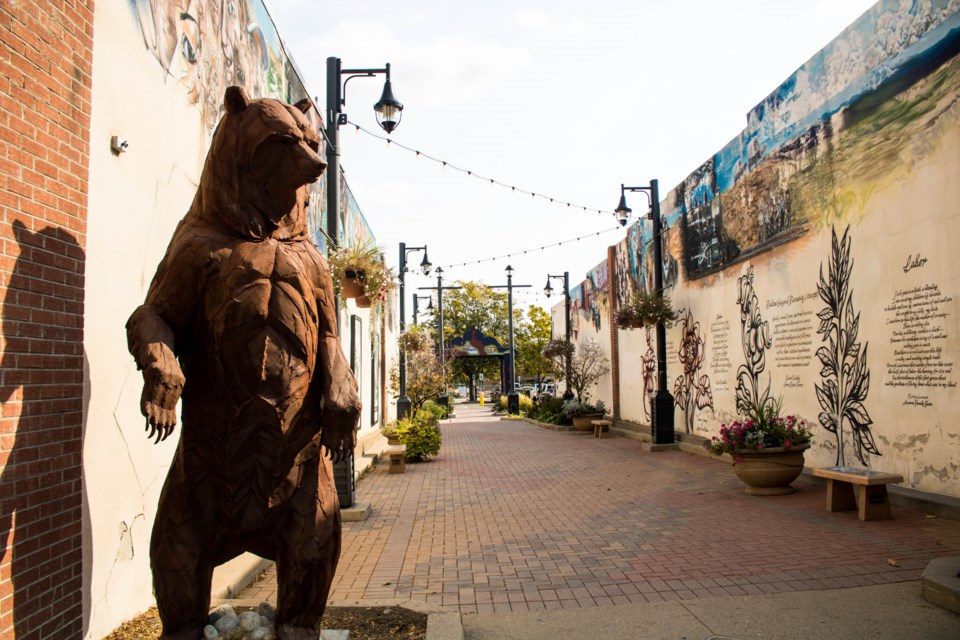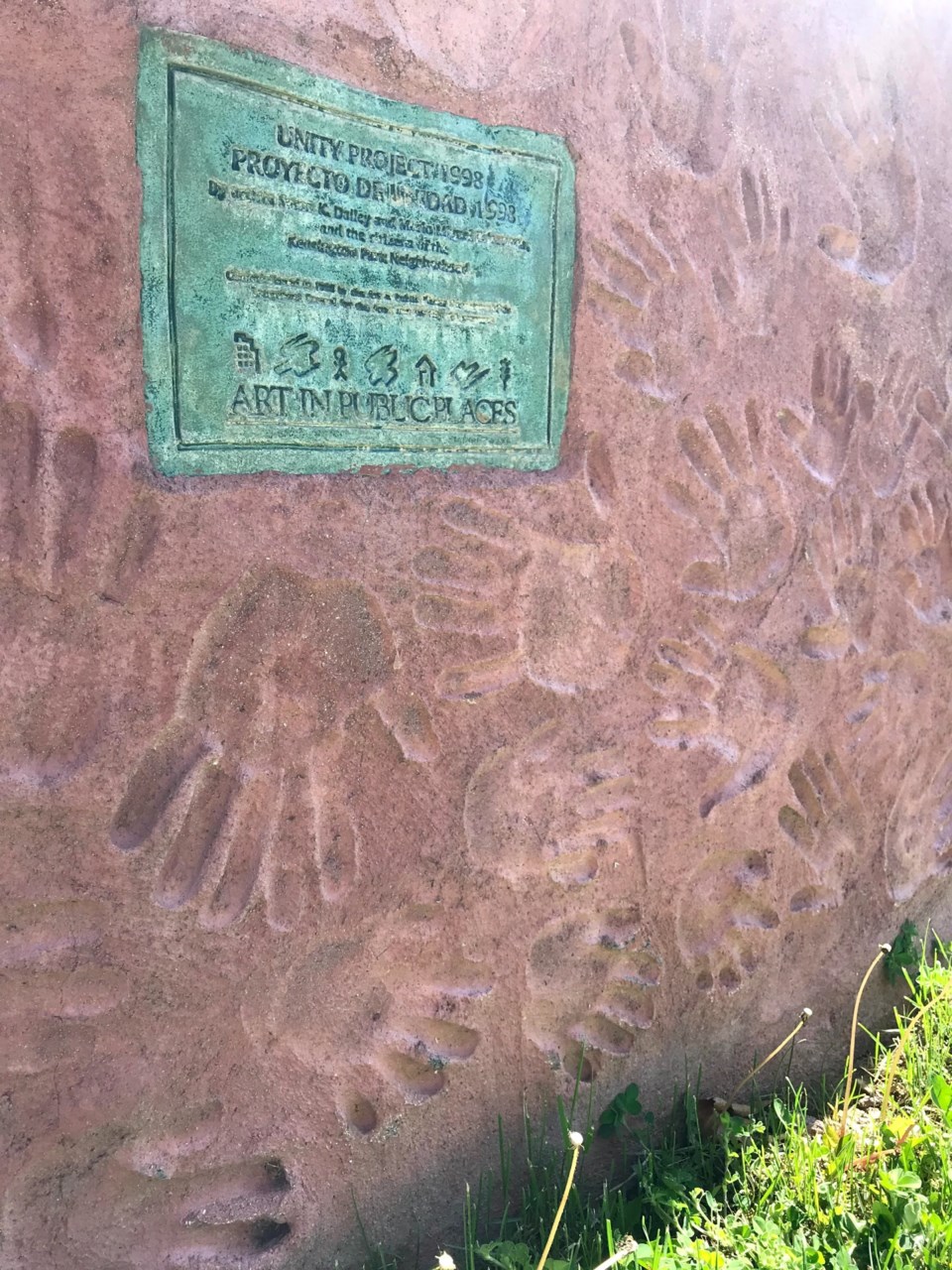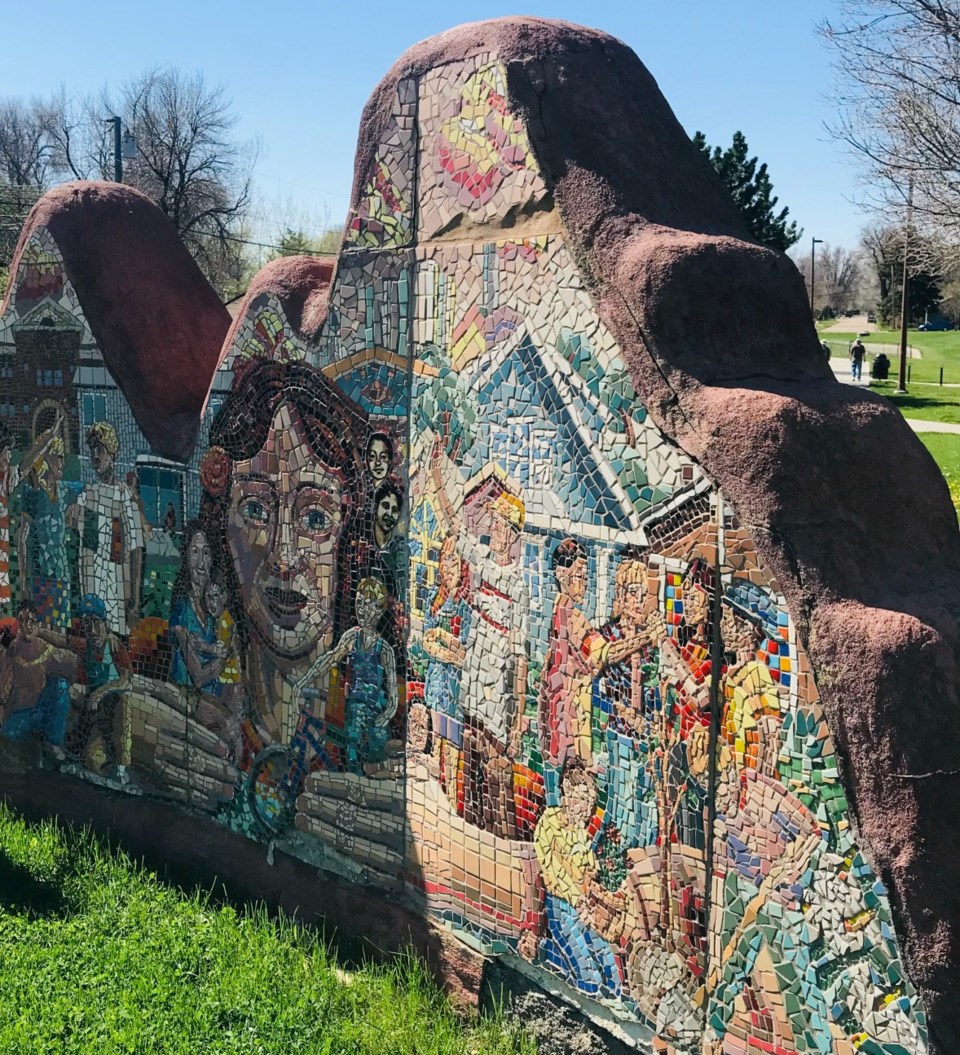Public art in Longmont will soon be bilingual.
The Art in Public Places Commission, a group that includes a city staff member, community volunteers and a city council member, plans to diversify plaques on public art across Longmont by printing them in Spanish, English and possibly other languages.
The project is in its initial stages and is part of the city’s new branding and push for inclusion, according to Marijke Unger, city communications manager.
“The city takes very seriously its commitment to equity and diversity, and we are always looking for ways to be more inclusive. This project … is one more way that we will be advancing those values,” she said.
Art in Public Places commissioners, in partnership with the city communications team, are looking at options to diversify plaque language as part of a scheduled maintenance program to be finished in mid-February, said Angela Brill, Art in Public Places administrator.
“Commissioners are noting if a plaque is present or missing, the material of the plaque, how it is mounted and collecting photo documentation,” she said. “We are just scratching the surface of quantifying the need for the collection. The project (of diversification) is a priority for the AIPP Commission.”
The short-term goal is to have all the collection pieces marked and the long-term goal is to unify the markers for the whole of the collection, she said. "All options are on the table."
There are more than 50 Shock Art boxes and over 80 pieces in the permanent public art collection, according to Rigo Leal, city public information officer.
“The collection is quite diverse and varied,” he said. “From works that have historical Longmont significance to works which enliven public space, the public art collection in Longmont is very unique to the city.”
 Ursa Major located in the 300 block of Main Street (Photo by Matt Maenpaa)
Ursa Major located in the 300 block of Main Street (Photo by Matt Maenpaa)Plaques on public art pieces have been installed over the 30 years the program has been in operation, Brill said.
“We are taking the time to unify and make them consistent,” she said. “By adding Spanish, we are being inclusive of Longmont’s Spanish speakers.”
Susan Horowitz, Art in Public Places commissioner and Longmont resident, said the commission is assessing the need to update logos and branding based on the data collected through the maintenance program that is underway.
Plaques are meant to inform the public about who created the artwork, the title of the piece, the installation date and that the commission is responsible for selecting, acquiring, installing and maintaining public art for the city, she said
The commission has been working on other ways to extend the reach of the program, including an outreach initiative to engage St. Vrain Valley schools through virtual programs, biking maps to locate installations, and exploring QR codes for the public to scan and hear information about the pieces, she said.
 The plaque posted on "The Unity Project" in Kensington Park at Kensington Street and Longs Peak Avenue. By Silvia Romero Solis
The plaque posted on "The Unity Project" in Kensington Park at Kensington Street and Longs Peak Avenue. By Silvia Romero Solis



